The Mobile CPU Core-Count Debate: Analyzing The Real World
by Andrei Frumusanu on September 1, 2015 8:00 AM EST- Posted in
- Smartphones
- CPUs
- Mobile
- SoCs
S-Browser - AnandTech Article
We start off with some browser-based scenarios such as website loading and scrolling. Since our device is a Samsung one, this is a good opportunity to verify the differences between the stock browser and Chrome as we've in the past identified large performance discrepancies between the two applications.
To also give the readers an idea of the actions logged, I've also recorded recreations of the actions during logging. These are not the actual events represented in the data as I didn't want the recording to affect the CPU behaviour.
We start off by loading an article on AnandTech and quickly scrolling through it. It's mostly at the beginning of the events that we're seeing high computational load as the website is being loaded and rendered.
Starting off at a look of the little cluster behaviour:
The time period of the data is 11.3s, as represented in the x-axis of the power state distribution chart. During the rendering of the page there doesn't seem to be any particular high load on the little cores in terms of threads, as we only see about 1 little thread use up around 20% of the CPU's capacity. Still this causes the cluster to remain at around the 1000MHz mark and causes the little cores to mostly stay in their active power state.
Once the website is loaded around the 6s mark, threads begin to migrate back to the little cores. Here we actually see them being used quite extensively as we see peaks of 70-80% usage. We actually have bursts where may seem like the total concurrent threads on the little cluster exceeds 4, but still nothing too dramatically overloaded.
Moving on to the big cluster:
On the big cluster, we see an inversion of the run-queue graph. Where the little cores didn't have many threads placed on them, we see large activity on the big cluster. The initial web site rendering is clearly done by the big cluster, and it looks like all 4 cores have working threads on them. Once the rendering is done and we're just scrolling through the page, the load on the big cluster is mostly limited to 1 large thread.
What is interesting to see here is that even though it's mostly just 1 large thread that requires performance on the big cores, most of the other cores still have some sort of activity on them which causes them to not be able to fall back into their power-collapse state. As a result, we see them stay within the low-residency clock-gated state.
On the frequency side, the big cores scale up to 1300-1500 MHz while rendering the initial site and 1000-1200 while scrolling around the loaded page.
When looking at the total amount of threads on the system, we can see that the S-Browser makes good use of at least 4 CPU cores with some peaks of up to 5 threads. All in all, this is a scenario which doesn't necessarily makes use of 8 cores per-se, however the 4+4 setup of big.LITTLE SoCs does seem to be fully utilized for power management as the computational load shifts between the clusters depending on the needed performance.



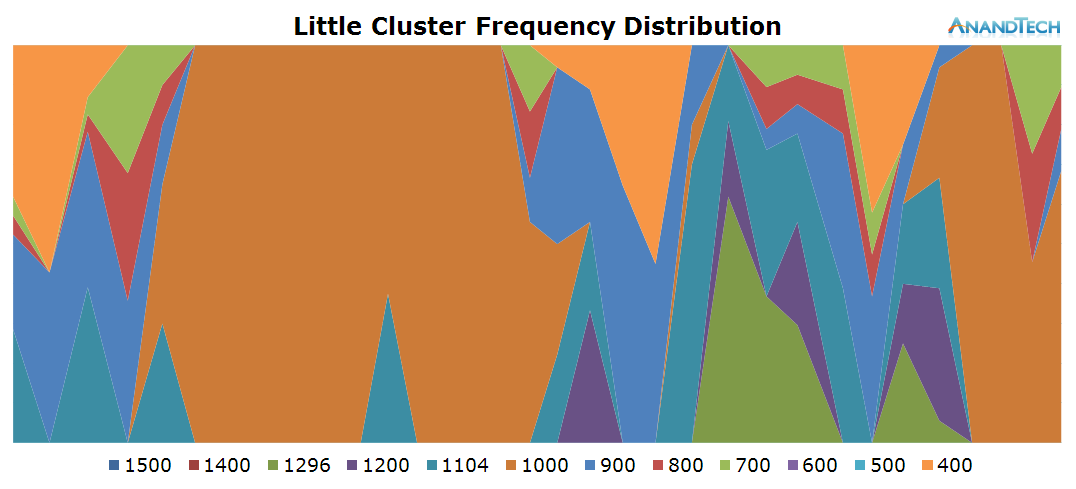

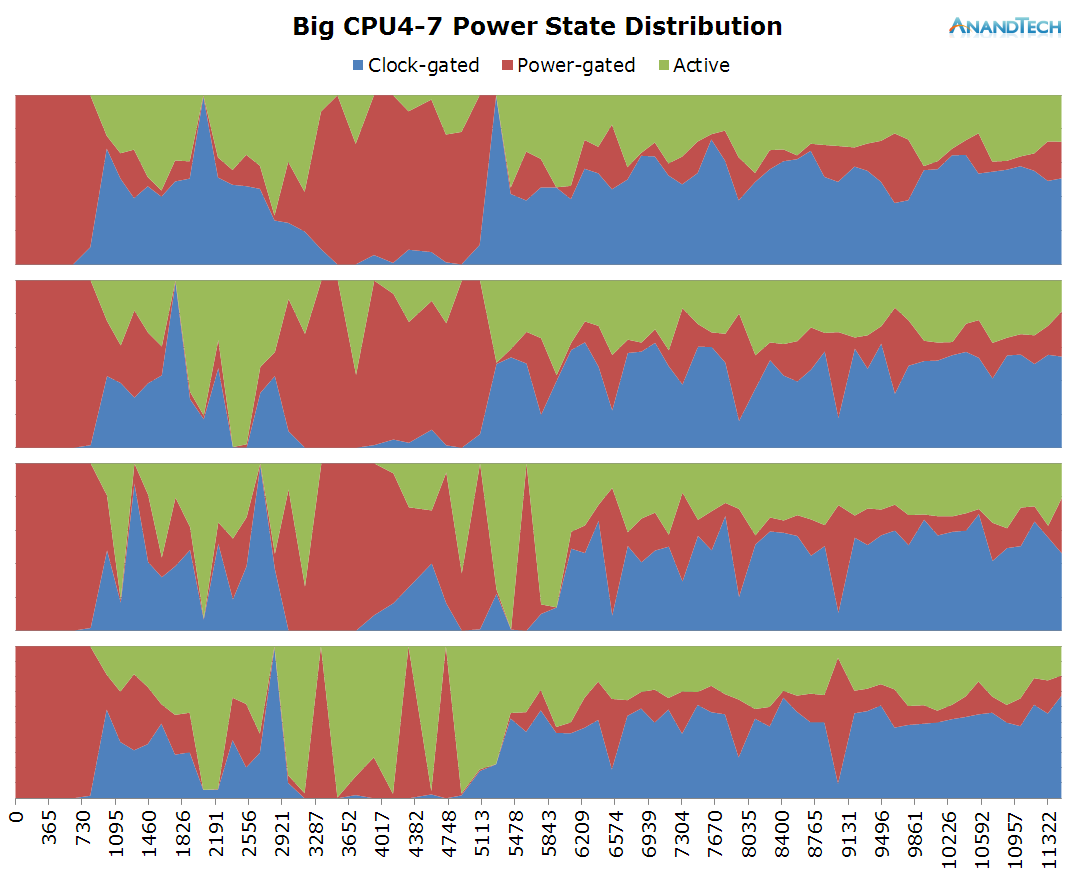
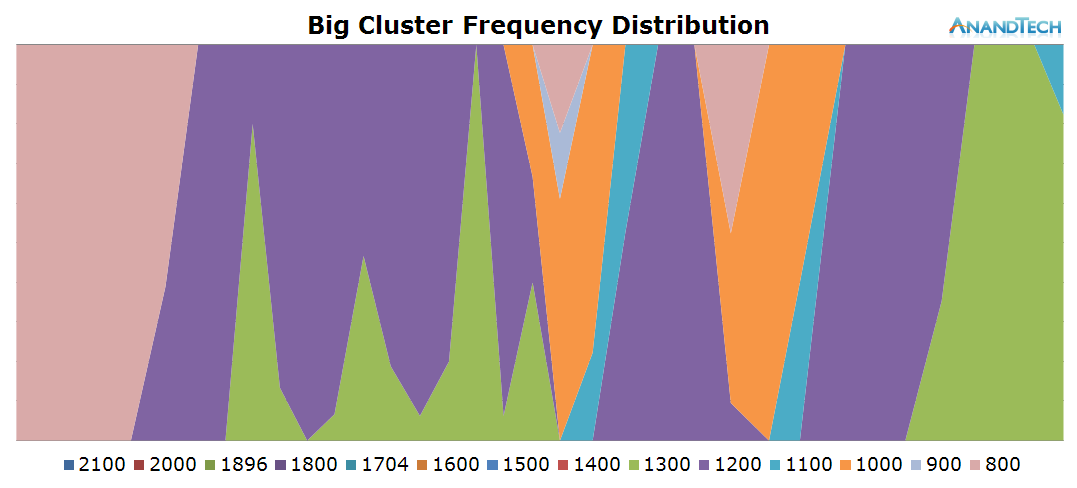
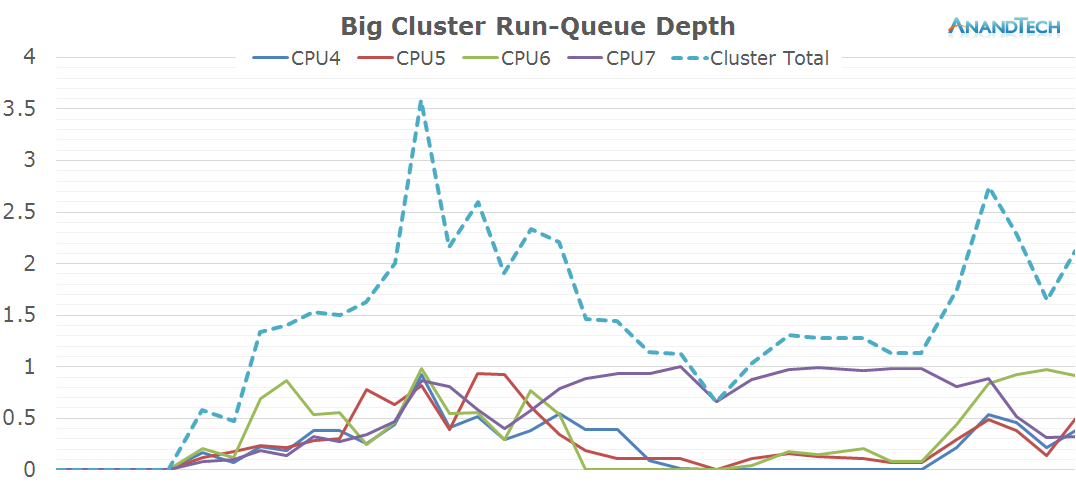
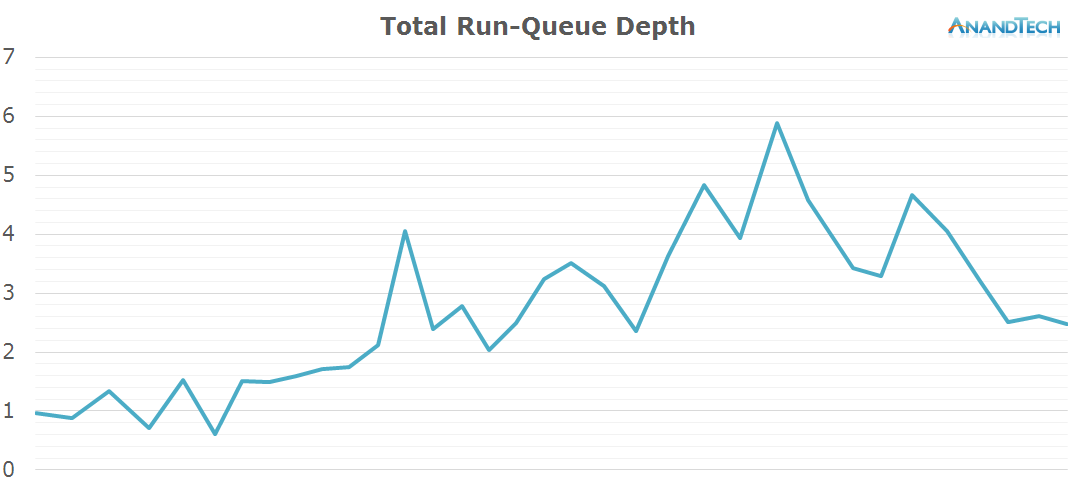








157 Comments
View All Comments
nightbringer57 - Tuesday, September 1, 2015 - link
Very interesting article, much more favourable to multi-core designs than I would have thought.Each article page must have cost an insane amount of time. However, I still feel like some more information could have been useful. This article is geared towards real-world use cases, but I think it would be interesting to repeat this analysis on a few commonly-used benchmarking apps. I feel like this would be interesting to compare them to real-world uses and may help understanding the results.
ingwe - Tuesday, September 1, 2015 - link
Yes that would be very interesting. I am always curious about how synthetics actually compare to more real world applications.Azethoth - Thursday, September 3, 2015 - link
Every single synthetic I have ever seen vastly exaggerates the benefit. I would be interested in an actual real world use case that actually matches a synthetic. It would blow my mind if there are any.Andrei Frumusanu - Tuesday, September 1, 2015 - link
I'll do a follow-up pipeline on this if the interest is high enough.bug77 - Tuesday, September 1, 2015 - link
High enough +1.Please do the follow-up.
tipoo - Tuesday, September 1, 2015 - link
I'd definitely be interested.Drumsticks - Tuesday, September 1, 2015 - link
Yes! This would be neat. Also, great article!ThisIsChrisKim - Tuesday, September 1, 2015 - link
Yes, Would love a follow-up.HanakoIkezawa - Tuesday, September 1, 2015 - link
I'm not sure of the practicality, but I would love to see a follow-up with Denver k1 and the A8X to see how lower core count out of order and in order SoCs are handled.This seriously was a fantastic article Andrei!
kspirit - Tuesday, September 1, 2015 - link
Yes please! +1